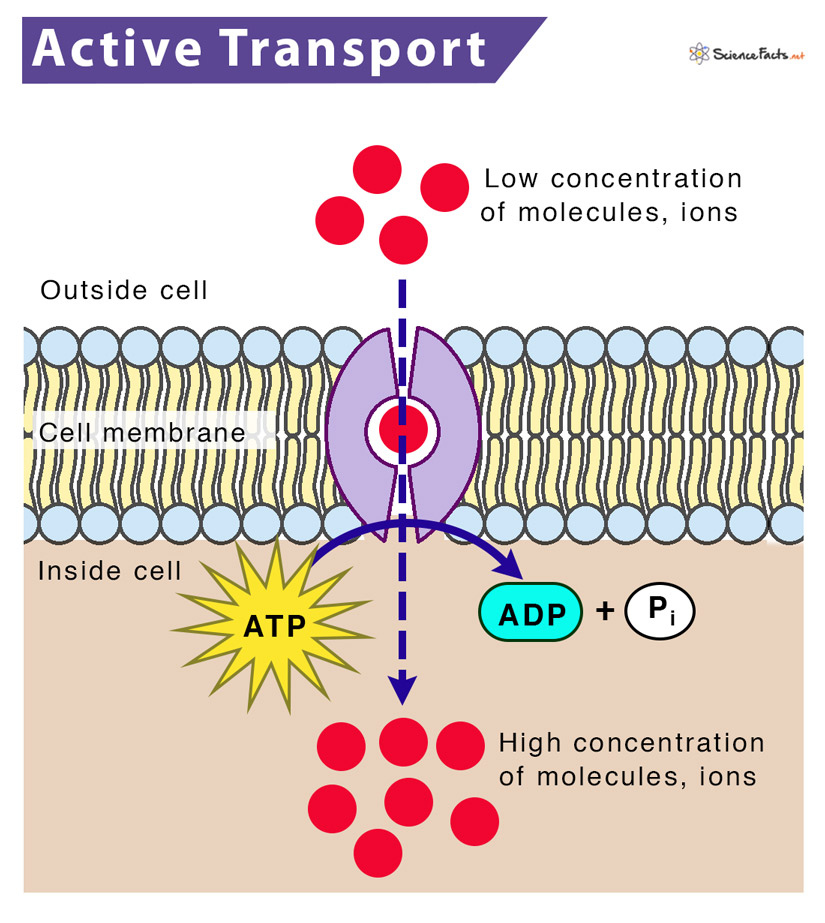31 Active Transport Drawing
Those proteins do much of the work in active transport. Small substances constantly pass through plasma membranes. Web active transport requires energy to move substances against a concentration or electrical gradient, like a canoeist paddling upstream. Web active transport usually happens across the cell membrane. A detailed edit history is available upon request.
Small substances constantly pass through plasma membranes. Web active transport is the process of transferring substances into, out of, and between cells, using energy. This exports three sodium ions in return for two potassium ions. The passage of some substances through membranes against a concentration gradient is unidirectional but not coupled to ionic movement even though atp is consumed in the process. Passive transport, on the other hand, does not require energy as substances move along their gradient, similar to a.
Those proteins do much of the work in active transport. In some cases, the movement of substances can be accomplished by passive transport, which uses no energy. Web primary active transport moves ions across a membrane and creates a difference in charge across that membrane, which is directly dependent on atp. Web active transport requires energy to move substances against a concentration or electrical gradient, like a canoeist paddling upstream. Active transport maintains concentrations of ions and other substances needed by living cells in the face of these passive movements.
Active Transport And Diffusion In Plants
The passage of some substances through membranes against a concentration gradient is unidirectional but not coupled to ionic movement even though atp is consumed in the process. Web active transport requires energy to move substances.
PPT Active Transport PowerPoint Presentation, free download ID2586036
Some cells can use up to 50% of their energy on active transport alone. Active transport is shared under a cc by 4.0 license and was authored, remixed, and/or curated by openstax via source content.
PPT Active Transport Protein Pumps and Endocytosis PowerPoint
This exports three sodium ions in return for two potassium ions. This process is in contrast to passive transport , which allows molecules or ions to move down their concentration gradient, from an area of.
Transport Across the Plasma Membrane Flashcards Easy Notecards
This is key to maintaining the resting membrane potential. Passive transport, which requires no energy; Web active transport is the process of transferring substances into, out of, and between cells, using energy. Passive transport, on.
Active Transport Definition, Types, and Examples Conduct Science
Passive transport does not use energy to transport molecules across the membrane. Primary active transport that uses adenosine triphosphate (atp), and secondary active transport that uses an electrochemical gradient. This uses energy from atp. Most.
Active transport Wikipedia
Passive transport, which requires no energy; Introduction have you been through airport security lately? Web this page titled 5.4: Primary active transport directly uses a source of chemical energy (e.g., atp) to move molecules across.
Active Transport Tutorial Sophia Learning
Web there are two basic ways that substances can cross the plasma membrane: Those proteins do much of the work in active transport. Active transport maintains concentrations of ions and other substances needed by living.
What Molecule Is Necessary for Active Transport WadehasJohns
Web active transport mechanisms may draw their enegy from the hydrolysis of atp, the absorbance of light, the transport of electrons, or coupling with other processes that are moving particles down their concentration gradients. Abstract.
Explain How Cells Use Active Transport Worksheet EdPlace
Active transport maintains concentrations of ions and other substances needed by living cells in the face of these passive movements. Web > unit 2 science > ap®︎/college biology > cell structure and function > facilitated.
Active transport Definition and Examples Biology Online Dictionary
Web in secondary active transport, the movement of a driving ion down an electrochemical gradient is used to drive the uphill transport of another ion/molecule against a concentration or electrochemical gradient. And active transport, which.
Web there are two basic ways that substances can cross the plasma membrane: Cotransport (also known as symport) and exchange (also known as. Active transport maintains concentrations of ions and other substances needed by living cells in the face of these passive movements. Introduction have you been through airport security lately? Primary active transport that uses adenosine triphosphate (atp), and secondary active transport that uses an electrochemical gradient. Primary active transport directly uses a source of chemical energy (e.g., atp) to move molecules across a membrane against their gradient. A detailed edit history is available upon request. Web this page titled 5.4: In some cases, the movement of substances can be accomplished by passive transport, which uses no energy. Web primary active transport moves ions across a membrane and creates a difference in charge across that membrane, which is directly dependent on atp. Active transport is shared under a cc by 4.0 license and was authored, remixed, and/or curated by openstax via source content that was edited to the style and standards of the libretexts platform; Two types of secondary active transport processes exist: Web in secondary active transport, the movement of a driving ion down an electrochemical gradient is used to drive the uphill transport of another ion/molecule against a concentration or electrochemical gradient. Web active transport mechanisms may draw their enegy from the hydrolysis of atp, the absorbance of light, the transport of electrons, or coupling with other processes that are moving particles down their concentration gradients. As you can see, transmembrane channels on either side of the pump allow the.










